Grow hydrangeas
At a Glance
Height: 1 to 2 metres plus
Colour: Shades of white, green, pink, red, purple, mauve and blue
Bloom time: Summer through to autumn
Position: Prefer partial shade
Soil conditions: Well drained rich garden soil
Selection
There are six main types of hydrangeas:
Bigleaf (Hydrangea macrophylla)
Oakleaf (Hydrangea quercifolia) eg. ‘Snowflake’
Climbing (Hydrangea petiolaris)
Panicle (Hydrangea paniculata) eg. ‘Limelight’
Smooth (Hydrangea arborescens) eg. ‘Annabelle’
Mountain (Hydrangea serrata)
Additionally, there are a variety of characteristics to choose from:
Size: dwarf varieties, standard size, taller forms and climbers.
Flower shape: double-flowered, lacecap, panicle, mophead or snowball.
Colour: bi-coloured or change with maturity or soil type.
With such a variety of choices, this means there is a hydrangea or three for every garden.
When to Plant
Hydrangeas can be planted all year round, although spring and autumn are recommended when the soil is moist. Summer is the best time to see plants in bloom to select your favourite and they can be planted then if you can keep them well-watered.
Where to Plant
Preferable, choose a spot that receives morning sun and afternoon shade. Consider the mature size, giving it plenty of room to grow. A free-draining soil that is rich in organic matter is best; amend the soil with compost if necessary. Avoid exposed spots where gusty winds could snap stems or beneath a tree where competition for space and light will prevent them from thriving.
How to Plant
Dig a generous sized hole and prepare your soil with generous amounts of compost and add a slow-release fertiliser (we recommend ican Slow Food) at half the recommended rate. Plant slightly higher than the plant is in the nursery container. If planting a group, space at least 1m apart (more, if planting larger varieties).
Mulching
Mulch with compost or leaf mould annually. Don’t add fertiliser as this will encourage leafy growth instead of flowers.
Watering
Hydrangeas like a moist but not wet soil, and don’t let them dry out during summer.
Pests and Diseases
Hydrangeas are generally not affected by serious disease or insect problems, however, some species may be susceptible to powdery mildew, hydrangea scale insect and occasionally thrips.
Changing colour
Hydrangea flowers, mainly the macrophylla varieties, can change colour with different soil fertility, but let a plant settle in a year or two before trying. Flower colour can be altered easily but it can take weeks or even months. The colour is determined by the amount of aluminum a plant can access in the soil — which is determined by soil pH and phosphorus levels.
A lower pH allows aluminum to be soluble and absorbed by plants (unless phosphorus is high), and the flowers tend to be blue. A higher pH locks up the aluminum and the flowers tend to be pink. For pink flowers, increase the soil pH by adding lime; for blue flowers, lower the soil pH by applying aluminium sulphate. Purple flowers are produced in mostly neutral pH soils, and white flowers are not influenced by acidity or alkalinity. The depth of colour in red and purple hydrangeas can be improved with the addition of iron to the soil.
Pruning
Many hydrangeas don’t need major pruning, just enough to keep them tidy by removing old flowers and dead stems, improve the shrub’s shape, and to open it up to let sun and air in.
Pruning is best done late winter or early spring. Around August/September the fat flower buds have developed so it is easier to know where to prune to get maximum flowering. Vegetative buds (leaves) will be long and skinny. Retain stems that have not flowered as these will provide flowers next season. We recommend deadheading in autumn and pruning properly back to fat buds from late winter.
Ideas to use hydrangeas
Hydrangeas are versatile plants for many gardens and can be used in various ways:
- In a container as a focal point
- To line a meandering path or set of steps
- Plant white hydrangeas to illuminate a shady corner
- Fill in gaps in a border
- Plant a climbing hydrangea on a trellis for screening
- Disguise an ugly boundary fence
- Cut fresh flowers for inside arrangements, and dry aging flowers for long-lasting displays.

29-Sep-2023
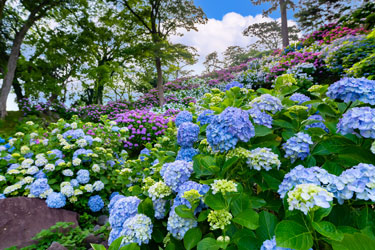
A bank of hydrangeas growing well in partial shade
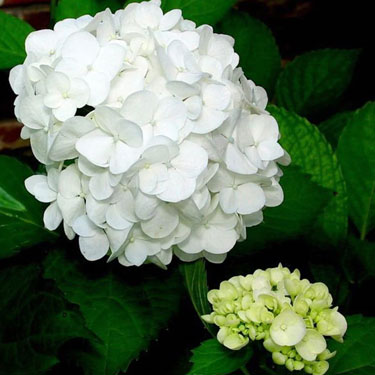
Hydrangea macrophylla Agnes Pavellii
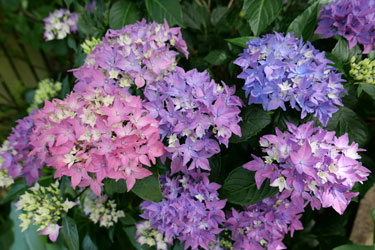
Hydrangea macrophylla 'Piamina'
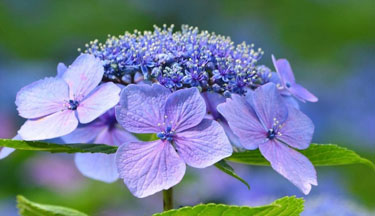
Hydrangea macrophylla lacecap variety
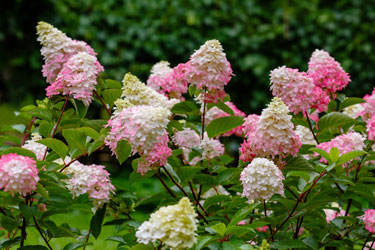
Hydrangea paniculata
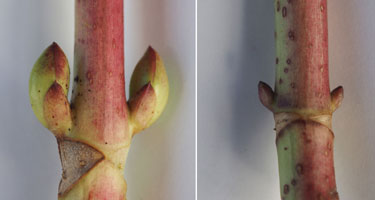
Left: hydrangea flower buds Right: hydrangea leaf buds
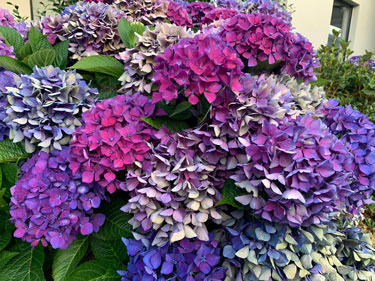
Late summer flowers fading in colour

A wreath of dry hydrangea flower heads

